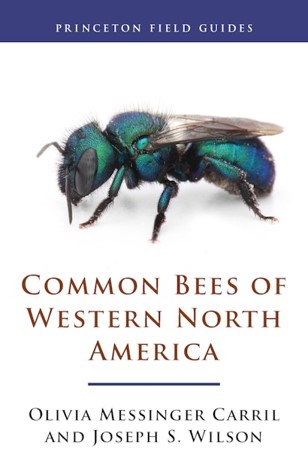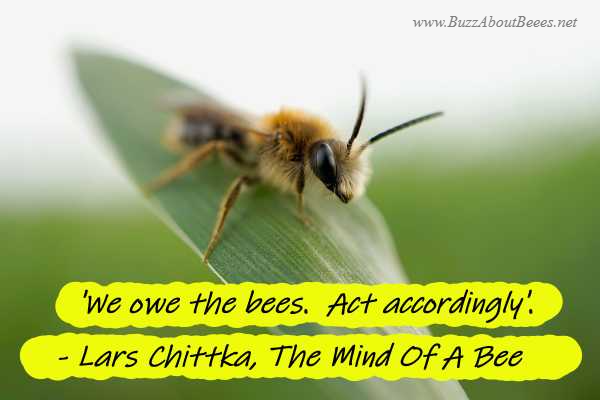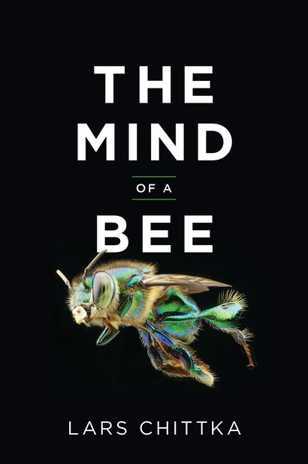Book Review: Common Bees of Western North America by Olivia Messinger Carril & Joseph S. Wilson
This
title, Common Bees of Western North America is a photographic guide which describes
the most commonly seen, 200 plus bee species of the 3,500 – 4,000 that have
been identified in western USA and Canada.
It complements their earlier (2021) book: Common Bees of Eastern North America (ISBN: 978-0-691-17549-2), and regular visitors to this website will know I frequently reference The Bees In Your Backyard by the same authors.
So what about Messinger Carril & Wilson’s latest work?

What I like most about this guide, is that it is written in a style that is highly accessible and useable for amateur enthusiasts and every-day bee-gogglers.
In fact, this guide is probably one of the most user-friendly I have come across, as it’s a great read and doesn’t require any previous in-depth knowledge of the subject.
For example the presentation, of anatomical information is less daunting than is found in other guides. In some guides, the anatomical terminology (I call it ‘entomological jargon’) is used with limited supporting clarification, and I.D. keys and species descriptions are further littered with these terms, which can be overwhelming for new enthusiasts.
In contrast, in Messinger Carril & Wilson’s guide, the explanation of anatomical parts and terminology are provided not only in the anatomy section, but also within the species description and key where helpful. This will make life a whole lot easier for the every-day naturalists and backyard gardeners.
Anatomical information is something that ultimately, can’t really be skipped as one is increasingly immersed in the world of bees, so this will be appreciated by many. However, there is also a useful ‘glossary of terms’ near the back of the book, so there should be no excuse for a reader not understanding what anatomical feature is being described!
Another helpful feature that sets the authors’ approach apart from that seen elsewhere, is the ‘Quick Reference Guide’ that appears early in the book (from page 25).
Instead of grouping a genus together, it’s based on several ‘macro-level’ morphological characteristics: bees that are extremely large; bees that are very hairy; bees with long antennae etc. Thus an observed distinctive feature can be picked out and compared with the Quick Reference, thus guiding readers more quickly to the correct genus or bee family.
The remaining book is set out in bee families (Halictidae, Melittidae, Apidae, etc), with the different genera in each covered in alphabetical order.
For each species included in the book there is a life-size silhouette of each and a graphic showing its distribution, along with details of its characteristics and clues to aid identification. There are also many highly detailed, clear photographs within this book: ‘macro’ level photos of individual species, and more ‘micro’ level photos of individual anatomical features.
I do feel, given the user-friendly approach taken by the authors, it’s surprising they have used Latin names exclusively in the species descriptions, even when common names are available.
For example, Svastra obliqua could also be labelled ‘sunflower longhorn bee’. It’s ironic that some guide books with more technical presentation, (such as Falk's Field Guide to Bees Of Great Britain And Ireland ) nevertheless do include these names.
I personally have found common names helpful during presentations, and perhaps a little more user-friendly when talking with children – who are tomorrow’s conservationists after all.
I do also have a gripe!
Regular readers will know I am fundamentally against the killing of bees merely to identify them, especially for hobbyists to create ‘collections’ – a hobby which in its worst expression, sees rare bee species such as Wallace’s Giant Leafcutter Bee, being sold on ebay (along with other rare insects).
Surely in 2023 we can completely abolish such out-dated, barbaric concepts, which in my view, are akin to bird egg collecting – but may be worse, because the species is killed outright, with no opportunity to breed or help establish a colony. I feel very strongly, that amateurs should be discouraged from killing bees to identify them, and from making species collections, whereas the authors provide guidance for doing just that.
Additionally, anyone capturing a rare or endangered species and killing it in order to identify it, will not know it’s endangered until after it is dead!
Furthermore, I would encourage all authors of guide books to read Chittka’s ‘Mind of a Bee’ if they need further convincing of bee sentience!
Despite my reservations, I think the book will serve as valuable addition to any enthusiast’s library for use in identifying those bees photographed during a field day. It’s quite hefty, but it’s overall size makes it easy to pop in your rucksack, and the lovely softback cover makes it pleasing to handle too.
But please, do not kill bees just for a hobby.
Common Bees of Western North America - Olivia Messinger Carril & Joseph S. Wilson
Princeton University Press
ISBN: 978-0-691-17550-8
The article below was written by me years ago:
If you found this page helpful or interesting, I'd really be grateful if you would share it with others - if not this page, perhaps another, such as Gardening For Bees.
Thank you so much :) .

